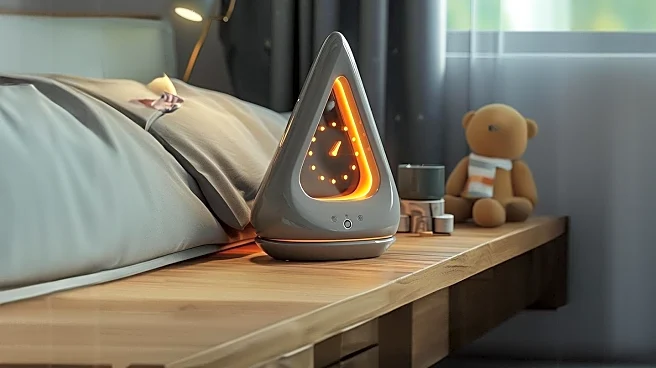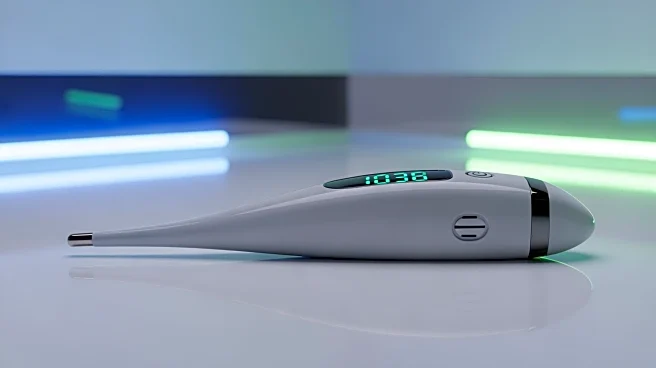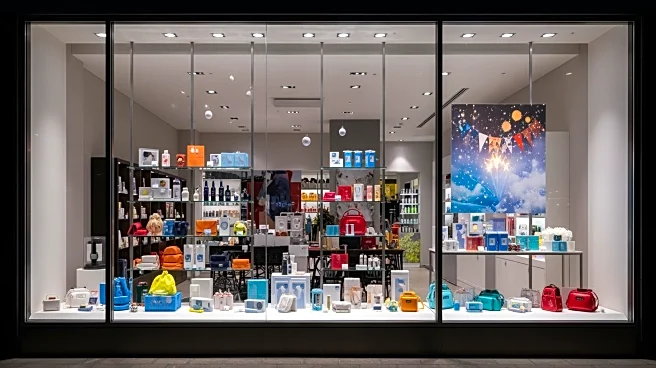What's Happening?
Withings has announced that its BeamO device, described as the 'thermometer of the future,' has received FDA clearance and is now available for purchase in the United States. The BeamO is not just a thermometer;
it also functions as an electrocardiogram and a stethoscope, allowing users to monitor heart and lung health. The device features two electrodes that perform a medically certified electrocardiogram in under a minute, with results displayed on an LED screen. Additionally, it can capture acoustic sound waves from the chest or back, enabling users to listen to heart and lung sounds via headphones. This feature is designed for recording and sharing with healthcare providers rather than direct diagnosis. The BeamO also measures body temperature through contactless analysis of the temporal artery. The device is available for $250 and includes a free one-month subscription to Withings Plus, which offers additional health assessments and insights.
Why It's Important?
The introduction of the BeamO device represents a significant advancement in personal health monitoring technology. By integrating multiple health monitoring functions into a single device, BeamO offers a convenient and comprehensive tool for individuals to track their health metrics. This is particularly important in the context of telehealth, where remote monitoring can enhance patient care and facilitate timely medical consultations. The FDA clearance underscores the device's reliability and potential impact on healthcare delivery. With the ability to perform electrocardiograms and auscultations, BeamO could empower users to engage more actively in their health management, potentially leading to earlier detection of health issues and more informed discussions with healthcare providers.
What's Next?
Withings plans to expand the availability of BeamO through Amazon and other retailers in early 2026. The company is also enhancing its Withings Plus subscription service, which provides users with additional health insights and assessments. As the device becomes more widely available, it is likely to attract interest from both consumers and healthcare professionals looking for innovative solutions in remote health monitoring. The integration of AI algorithms to analyze health data could further enhance the device's utility, offering users personalized health insights and trend detection.













